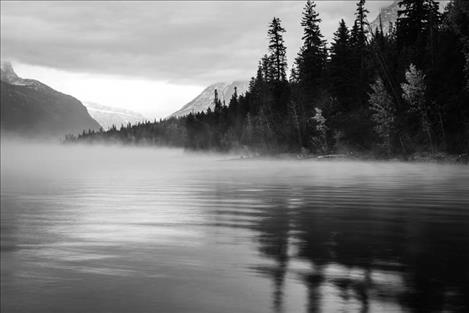UM Scientists study shifts in forest cover caused by fires, climate change
Hey savvy news reader! Thanks for choosing local.
You are now reading
1 of 3 free articles.
UM News Service
MONTANA — New University of Montana research highlights how climate change and wildfires could profoundly alter forests across the Rocky Mountains.
UM scientists examined where high-severity wildfires – combined with hot, dry conditions following fire – are likely to cause shifts from ponderosa pine and Douglas-fir forests to different types of vegetation across the species’ range from Montana to New Mexico. They predict 16 percent of ponderosa pine and 10 percent of Douglas-fir forests in the Rocky Mountains could be lost by roughly 2050 due to the combination of high-severity fire and climate change.
Their new study, “Fire-catalyzed Vegetation Shifts in Ponderosa Pine and Douglas-fir Forests of the Western United States,” was published Sept. 18 in the academic journal Environmental Research Letters.
“Forests in the West are increasingly affected by wildfire and climate change, and there is concern that this combination may lead to the loss of forests,” said Kimberley Davis, a research scientist in UM’s W.A. Franke College of Forestry and Conservation and the study’s lead author. “Forests may not return after wildfires if two things occur. First, there needs to be a high severity fire that kills adult trees. Second, there needs to be a failure of tree regeneration following the fire.”
If this combination occurs, and trees don’t regenerate, land cover will shift from ponderosa pine and Douglas-fir forests to shrubland, grassland or other forest types.
To predict where such shifts are most likely, the authors compared projections of areas most likely to burn at high severity with projections of where the climate may be too hot and dry for trees to regenerate after fires.
“We know that ponderosa pine and Douglas-fir regeneration after wildfires is sensitive to seasonal climate conditions and that conditions are already too hot and dry for regeneration at some of our study sites,” Davis said. “We did not know how widespread these limiting climate conditions were and how that may change in the future.”
The researchers found that the area that can support tree regeneration has declined significantly since the 1980s, and they expect that trend to continue in the near-term future.
They also found that southern ecoregions had considerably higher vulnerability to fire-catalyzed vegetation shifts than northern ecoregions.
Overall, the study suggests that even under current climate conditions, a significant percent of the low-elevation forests within the Rockies may shift to other vegetation types due to the combination of high-severity fire and climate conditions that are too hot and dry for tree regeneration.
“Ponderosa pine and Douglas-fir are two of the most dominant tree species in the Rockies,” Davis said. “They are important to the timber and outdoor recreation industries and also provide important ecosystem services such as carbon storage and water regulation and supply. More area is burning every year, and other types of vegetation that may replace these forests following fire will likely provide different ecosystem services or economic opportunities. It will be important for managers and other stakeholders to know where we might expect these transitions so they can plan accordingly.”
UM co-authors include Philip Higuera and Solomon Dobrowski. Additional co-authors include researchers from the Aldo Leopold Wilderness Research Institute; the University of California, Merced; the University of Colorado, Boulder; and the University of North Carolina, Wilmington.
This study is available online at https://iopscience.iop.org/article/10.1088/1748-9326/abb9df.
















